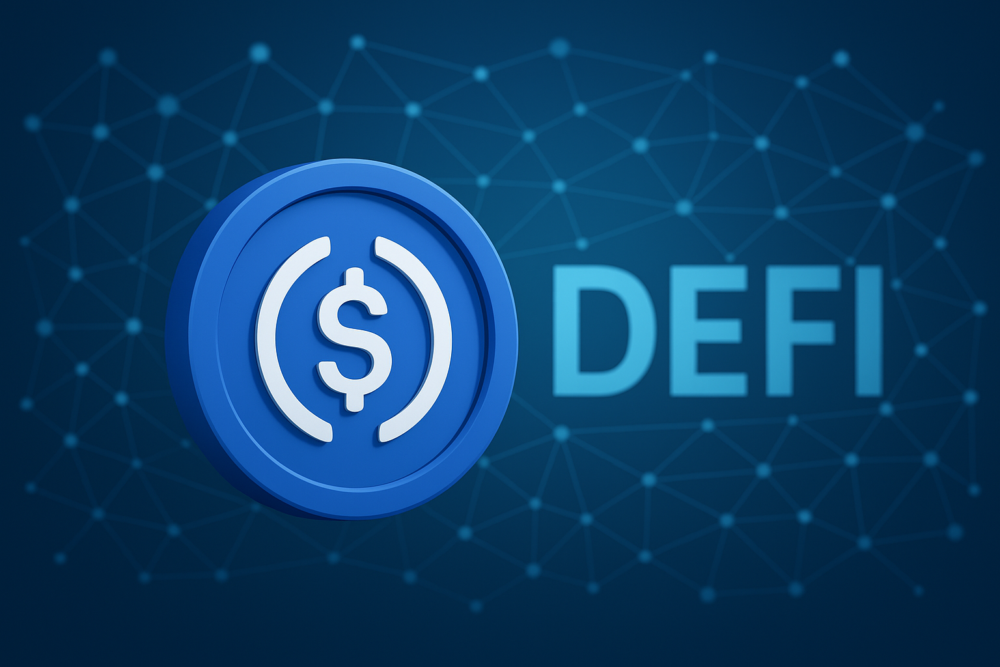Coinbase Global (NASDAQ: COIN) has relaunched its Stablecoin Bootstrap Fund to strengthen liquidity for USD Coin (USDC) in decentralized finance (DeFi).
The company announced on Tuesday that the first allocations will supply USDC liquidity to Ethereum-based lenders Aave and Morpho, as well as Solana-based trading platforms Kamino and Jupiter.
The deployments will be managed by Coinbase Asset Management. The goal is to ensure that users can access reliable rates across both established and emerging protocols.
Coinbase said it aims to expand the fund’s scope over time. Additionally, the company expressed interest in working with pre-launch teams or projects seeking to grow stablecoin use from the outset.
Coinbase did not disclose the fund’s size. However, the company helped launch USDC alongside its issuer, Circle Internet Group, and continues to play a central role in its ecosystem.
USDC remains the second-largest stablecoin, trailing far behind Tether (USDT), which holds a market capitalization lead of more than USD$100 billion. Therefore, Coinbase’s push to boost USDC’s liquidity in DeFi could draw more traders and borrowers toward the token.
According to data aggregation and analytics platform, DefiLlama, total value locked in DeFi protocols is now USD$165.4 billion. Aave leads with USD$41 billion, followed closely by Ether liquid staking protocol Lido with USD$40.8 billion. Furthermore, data from CoinGecko shows USDC with a market cap of USD$65.6 billion, compared to USDT’s USD$164.6 billion.
The Stablecoin Bootstrap Fund was first launched in September 2019. At that time, it supported Ethereum-based DeFi protocols such as Uniswap, Compound, and dYdX. The initial fund allocated $1 million each to Compound and dYdX. These early deployments helped USDC establish a strong foothold in DeFi after its 2018 launch.
Read more: 180 Life Sciences shares spike 76% on crypto company rebrand
Read More: BitBridge Capital launches disruptive Bitcoin lending strategy
Coinbase expanded its stablecoin strategy
USDC operates on several blockchains, including Ethereum, Base, Solana, Polygon, Aptos, Avalanche, and Sui. In addition, Coinbase has recently been expanding its stablecoin strategy as part of a broader push to capture market share from Tether.
The relaunch also comes as Coinbase reported USD$1.5 billion in second-quarter revenue. This fell short of industry forecasts, which ranged from USD$1.56 billion to USD$1.59 billion. Revenue dropped 26 per cent from the prior quarter. However, stablecoin-related revenue — mostly from USDC — rose 12 per cent to USD$332 million.
Furthermore, Coinbase is moving ahead with product diversification. On July 16, the company rebranded its Coinbase Wallet to “Base app.” The firm intends to evolve the product from a crypto wallet into a multifunctional “super app” that integrates social networking, apps, chat, payments, and trading. Accordingly, Coinbase hopes the Base app will become a hub for economic freedom, creativity, and innovation.
John Granata, head of product for Base app, said the platform could be a launching point for a new kind of social network. The app remains in beta testing.
By reviving the Stablecoin Bootstrap Fund, Coinbase is signaling a renewed commitment to DeFi growth. The company appears intent on positioning USDC as a more competitive alternative to USDT in global markets.
Additionally, by pairing liquidity efforts with an expanded product ecosystem, Coinbase aims to attract both traders and everyday crypto users. The combination of DeFi integration, stablecoin promotion, and app development could shape the company’s long-term growth trajectory.














